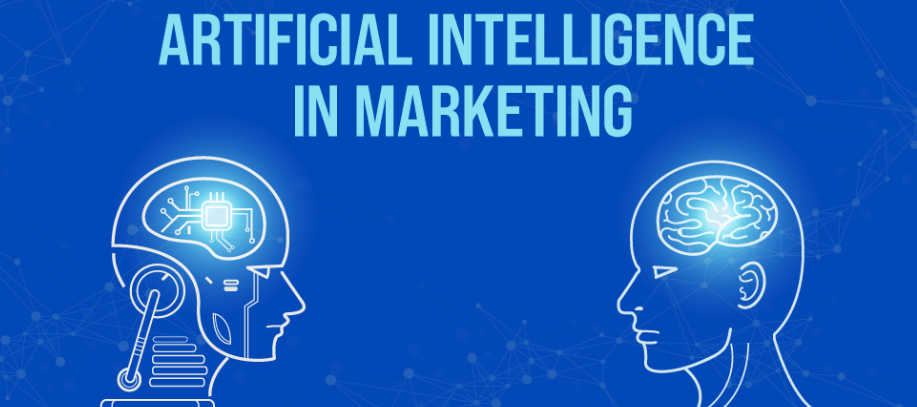Introduction
Understanding Generative Engine Optimization
In today’s digital landscape, businesses face an ever-increasing competition. Generative Engine Optimization (G.E.O.) introduces a new era for content creation and enhancing search engine rankings. At its core, G.E.O. leverages advanced algorithms and artificial intelligence (AI) to produce high-quality content that aligns with user intent. This involves optimizing websites for both search engines and human users, making the content more relatable and engaging.
Importance of implementing G.E.O.
Implementing G.E.O. is crucial for several reasons:
- Enhanced Visibility: When search engines prioritize unique, relevant content, businesses utilizing G.E.O. can see significant boosts in their rankings.
- AI-generated content can be customized to match different audience preferences, increasing engagement and holding their attention longer.
- Resource Efficiency: G.E.O. automates parts of the content creation process, allowing marketers to focus on strategy and creative direction.
To put it simply, understanding and applying G.E.O. sets the foundation for effective Digital Marketing in an AI-driven world. As businesses gear up to embrace this innovative approach, the question arises: what do you need to know about it?

Fundamentals of Generative Engine Optimization
Definition and Background
Building on the importance of G.E.O., it’s essential to define what it actually is. Generative Engine Optimization combines the principles of traditional search engine optimization (SEO) with generative AI technologies. Essentially, G.E.O. involves creating dynamic content that not only ranks well on search engines but also resonates with human readers.
This innovative approach stems from the need to adapt to the rapidly changing algorithms of search engines. As users demand more personalized and relevant content, G.E.O. emerges as a solution that meets these expectations, ensuring that businesses stay competitive in the digital marketplace.
Key Components of G.E.O.
To effectively utilize G.E.O., consider these key components:
- AI-Powered Content Creation: Utilizing AI tools to generate high-quality content tailored to audience preferences.
- Keyword Optimization: Identifying and strategically integrating keywords that enhance searchability while maintaining natural language flow.
- User Experience (UX) Focus: Understanding user behavior to ensure that the content meets needs and expectations.
By blending these components, G.E.O. not only drives traffic but also fosters engagement, turning casual visitors into loyal customers. It’s a tactical blend of technology and creativity that can transform the way organizations approach content marketing.
Implementing Generative Engine Optimization
Developing a G.E.O. strategy
Now that you have a solid understanding of Generative Engine Optimization, it’s time to explore how to effectively implement it. Developing a G.E.O. strategy begins with understanding your target audience. Ask yourself: What type of content resonates with them? What are their preferred channels of communication?
Here are some steps to guide your strategy development:
- Define Your Goals: Are you looking to boost brand awareness or increase conversions? Clearly stated goals provide direction.
- Conduct Audience Research: Use tools like surveys or analytics to gather insights about your audience’s content preferences.
- Create a Content Plan: Develop a mix of content types—blogs, videos, and infographics—to keep your audience engaged.
By approaching your G.E.O. strategy with a plan, you set the stage for successful execution and measurable results.
Tools and Technologies for G.E.O.
To streamline the implementation of your G.E.O. strategy, leverage various tools and technologies that facilitate effective content generation and optimization:
- AI Content Generators: Platforms like Jasper or Copy.ai can help generate engaging content quickly.
- SEO Analytics Tools: Tools like SEMrush or Ahrefs offer insights into keyword performance and competition.
- User Engagement Analytics: Google Analytics provides data on how visitors interact with your content, helping refine your approach.
Combining these technologies with a well-thought-out strategy can significantly enhance your G.E.O. efforts, making your online presence more impactful and successful.

Advanced Techniques in Generative Engine Optimization
Machine Learning in G.E.O.
As we delve into advanced techniques for Generative Engine Optimization, machine learning emerges as a game-changer. By employing machine learning algorithms, businesses can analyze vast amounts of data to uncover patterns and trends that would be impossible to identify manually. For instance, machine learning models can recommend content topics based on user search behavior, effectively personalizing content for different audience segments.
Key benefits of utilizing machine learning in G.E.O. include:
- Content Personalization: Tailoring recommendations to individual user preferences boosts engagement and retention.
- Predictive Analysis: Anticipating future trends allows businesses to stay ahead of the competition by providing timely, relevant content.
Data Analysis and Interpretation for G.E.O.
Data analysis and interpretation are critical components of a successful G.E.O. strategy. Collecting data is just the beginning; knowing how to analyze and draw conclusions from that data is where the real power lies.
Here’s how to approach this:
- Identify Key Metrics: Focus on metrics such as bounce rate, average session duration, and conversion rates.
- Use Data Visualization Tools: Tools like Tableau or Google Data Studio help turn complex data sets into easy-to-understand visual insights.
By blending machine learning capabilities with robust data analysis, businesses can refine their G.E.O. strategies, making informed decisions that lead to effective content creation and optimization. This synergy not only maximizes visibility but also enhances user satisfaction.

Measuring Success and Analyzing Results
Key Metrics in G.E.O.
To truly gauge the effectiveness of your Generative Engine Optimization (G.E.O.) efforts, it is essential to measure success through specific key metrics. These metrics offer insight into how well your content is performing and where adjustments may be needed. Here are some crucial metrics to track:
- Organic Traffic: Measure the number of visitors coming from search engines. An increase signifies enhanced visibility.
- Engagement Rate: Look at metrics like time spent on site and pages per session. High engagement often signifies that users find your content valuable.
- Conversion Rates: Track how many visitors complete desired actions, such as signing up for a newsletter or making a purchase. This is a clear indicator of G.E.O. success.
By consistently monitoring these key metrics, you can make informed decisions about your content strategy.
Interpreting G.E.O. performance data
Understanding the data behind your G.E.O. performance is equally crucial. This involves:
- Trend Analysis: Look for patterns in your metrics over time. For example, did a particular type of content lead to spikes in engagement?
- Comparative Analysis: Compare your results against industry benchmarks to identify areas for improvement.
- User Feedback: Incorporate qualitative data from surveys or comments to enrich your understanding of audience needs.
Interpreting this performance data allows you to refine your strategy continually, ensuring that your G.E.O. initiatives not only drive traffic but also foster meaningful interactions, ultimately leading to better business outcomes.
Challenges and Solutions in Generative Engine Optimization
Common Obstacles in G.E.O.
Despite the power of Generative Engine Optimization, there are several challenges that businesses may face during implementation. Recognizing these obstacles is the first step toward developing effective solutions. Some common challenges include:
- Content Quality Control: While AI can produce content rapidly, ensuring that it maintains high quality can be difficult.
- Algorithm Changes: Search engines frequently update their algorithms, which can impact G.E.O. strategies overnight.
- Data Overload: With the vast amount of data available, determining which metrics are most relevant can be overwhelming.
These issues can hinder progress and lead to frustration.
Strategies to Overcome G.E.O. Challenges
Developing strategies to address these challenges is essential for success. Consider these approaches:
- Regular Audits: Conduct routine content audits to check for quality and relevance, ensuring that AI-generated content aligns with brand values.
- Stay Updated: Subscribe to SEO news sources to keep abreast of algorithm changes and adjust strategies accordingly.
- Focus on Key Metrics: Prioritize data that directly impacts your goals, allowing for more straightforward analysis and action.
By proactively addressing these challenges, businesses can navigate the complexities of G.E.O., ultimately leading to improved results and sustained growth in an ever-evolving digital landscape.

Future Trends and Innovations in G.E.O.
The Evolution of G.E.O.
The future of Generative Engine Optimization (G.E.O.) will change how content is created and consumed. Keyword stuffing is no longer effective; the focus is shifting to a more sophisticated approach. The integration of machine learning and deep learning technologies means that G.E.O. strategies will continually refine themselves based on user interactions. This dynamic adaptation is vital, as users become increasingly discerning about the content they engage with.
Key factors driving this evolution include:
- User-Centric Design: G.E.O. is now more focused on delivering an exceptional user experience rather than just meeting search engine criteria.
- Content Diversification: There is growing demand for diverse content formats, such as podcasts and interactive infographics, to match changing consumer preferences.
Emerging Technologies in G.E.O.
With this evolution comes the emergence of groundbreaking technologies set to enhance G.E.O.:
- Natural Language Processing (NLP): NLP is becoming more sophisticated, allowing systems to generate content that feels authentic and human-like.
- Voice Search Optimization: As voice search continues to rise, G.E.O. strategies will need to adapt to conversational keywords and phrases.
- Blockchain Technology: It can increase transparency in content authenticity, enhancing trust in generated content.
By embracing these emerging technologies, businesses can stay ahead in the G.E.O. landscape, ensuring that their strategies remain relevant and effective while fostering deeper connections with their audience.
Conclusion and Recommendations
Summary of G.E.O. Principles
As we conclude this exploration of Generative Engine Optimization (G.E.O.), it’s essential to recap its fundamental principles. G.E.O. It’s not just about creating content for search engines; it’s about making engaging, high-quality content that meets users’ needs. By integrating artificial intelligence and machine learning, businesses can produce tailored content that evolves with audience preferences. This symbiosis between technology and creativity is key to capturing attention in a crowded digital space.
Practical Tips for Effective G.E.O. Implementation
To effectively implement G.E.O., consider these practical tips:
- Invest in Quality Tools: Utilize AI-driven content tools and SEO analytics platforms to enhance your G.E.O. strategy.
- Stay Agile: Be prepared to pivot based on algorithm changes and emerging user trends, ensuring your strategies remain relevant.
- Prioritize User Experience: Always align your content creation with user intent and experience, promoting higher engagement and satisfaction.
Generative Engine Optimization: What Is It, Why Is It Important, and What Do I Need to Know About It?
In summary, Generative Engine Optimization is vital for businesses aiming to enhance their online presence in an increasingly competitive landscape. It allows for the efficient creation of personalized, quality content that resonates with users. By understanding and utilizing G.E.O., organizations can improve visibility, engagement, and ultimately drive conversions. Embracing this approach will position your brand for success in the digital age.
For More Information
Check out my AI-generated podcast on GEO here:




